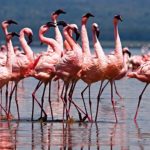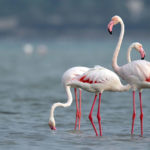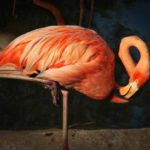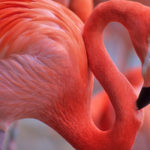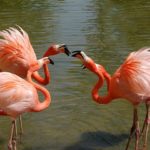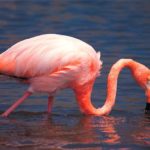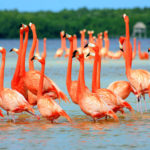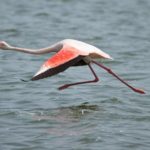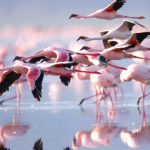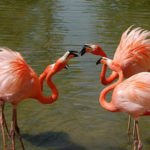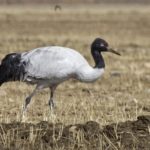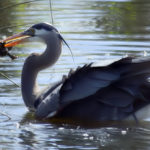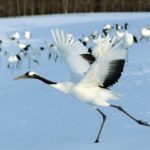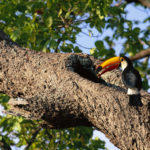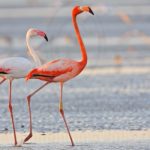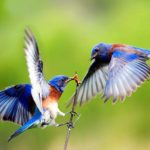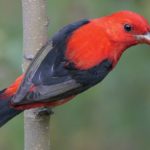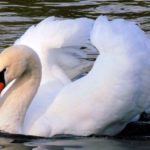Flamingos
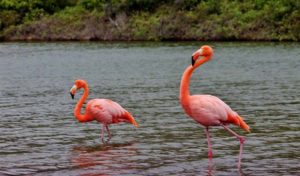 Flamingos are one of the most amazing and contradictory birds. On the one hand, their body is disproportionate: a short torso, a very long neck, incredibly thin legs, a small head and a curved beak are somehow disproportionate to each other. On the other hand, such disproportionality is surprisingly harmonious and flamingos have become synonymous with grace and subtle beauty.
Flamingos are one of the most amazing and contradictory birds. On the one hand, their body is disproportionate: a short torso, a very long neck, incredibly thin legs, a small head and a curved beak are somehow disproportionate to each other. On the other hand, such disproportionality is surprisingly harmonious and flamingos have become synonymous with grace and subtle beauty.
At first glance, the flamingo resembles the image of the winged birds – storks, herons, cranes – but they are not related to any of the listed species. The closest relatives of flamingos are … banal geese. Previously, flamingos were even ranked as a group of Goose-like, but later they were assigned to a separate flamingo unit, which consists of only 6 species. All representatives of the detachment are medium-sized birds weighing several kilograms. A distinctive feature of flamingos are long legs and neck, necessary for movement in the shallow water areas. The paws of the flamingos are like a goose’s. Big as if broken in the middle of the beak of flamingos is also similar to goose, its edges are dotted with small denticles. These denticles form the seedling apparatus with which the flamingos produce food.
All types of flamingos have a similar coloration from pale pink to a saturated scarlet color. Flamingos are typical inhabitants of the tropics, but some species can tolerate cold. So, the South American flamingo species inhabit the highlands of the Andes, where frosts are not uncommon. Pink, or ordinary flamingo lives in the subtropical and even in the south of the temperate zone, in the northern part of the range these birds are migratory. There are cases when flamingos accidentally flew even to the territory of Estonia during the flights. All kinds of flamingos live along the shores of shallow water reservoirs, and flamingos prefer reservoirs with a high salt content. Such habits are determined by the nature of the food.
The food of flamingos is small crustaceans and microscopic algae, rich in coloring substances – carotenoids. These organisms do not occur in fresh water bodies, therefore in search of food flamingos are forced to colonize extreme places. In some African lakes populated by flamingos, the water is so alkaline that it can literally eat up living flesh. Flamingos survive in such reservoirs due to dense skin covering the feet of birds, but at the slightest damage it causes inflammation, which can end badly for the bird.
By the way, these flamingos are also obliged by their magnificent coloring of plumage: pigments accumulate in feathers and give them a pink or red shade. When kept in the zoo, the flamingos lose the pigment over time and become white. To preserve their attractive appearance in the bird food add coloring ingredients, for example red pepper. Such “artificial” birds can be recognized by the red-orange shade of feathers.
All flamingos are flocking birds, living in large clusters of several thousand individuals. In search of food flamingos are knocked together in a dense flock and walk amicably along the shallows, stirring up the water with their paws. At the same time, they lower the beak into the water and filter the edible animals through it.
Flamingos sleep directly in shallow water, standing in the water. Flamingos fly well, but takeoff (like many goose birds) is associated with some difficulties.
First, the flamingos are accelerated by run, then wings of the wings rise into the air, continuing for a while to sort out their paws by inertia. Flying flamingos with elongated neck and legs.



